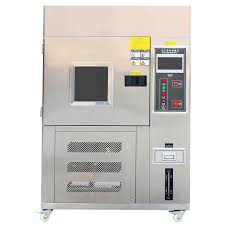Core components of air-cooled xenon lamp aging tester

In the field of material weatherability testing, air-cooled xenon lamp aging testers play a pivotal role, and their excellent performance is inseparable from the coordinated efforts of a series of core components.

1. Xenon lamp
The xenon lamp is undoubtedly the core light-emitting component of the entire tester, and it can be called the "main force" for simulating natural sunlight. It can emit a continuous spectrum, and its wavelength range covers a wide range of key areas from ultraviolet to infrared, which is highly similar to the spectral distribution of sunlight. Long-arc xenon lamps have become the first choice for many testers with their stable light output and long service life. When working, a precise power supply control system is used to provide a stable current for the xenon lamp to ensure the precise and constant light intensity. For example, the xenon lamps used in some high-end models can control the light intensity fluctuation within a very small range during long-term testing, providing reliable and consistent lighting conditions for material aging tests, so that the test results can accurately reflect the real aging process of the material under natural light.
2. Air-cooling device
The air-cooling device is like a silent guard, shouldering the important task of regulating the temperature in the test chamber. It is mainly composed of a powerful fan, a well-designed air duct, and heat dissipation fins. When the xenon lamp continues to emit light and generates a lot of heat, the fan runs at high speed, quickly introducing cold air, flowing along the air duct in an orderly manner, taking away the heat, and dissipating the heat to the surrounding environment through the heat dissipation fins. Compared with traditional water cooling, air cooling has significant advantages. On the one hand, it avoids the hidden dangers of water leakage caused by the complex water circulation system and reduces the equipment failure rate; on the other hand, it has a fast response speed and can restore the temperature to stability in a short time. For example, when simulating the high temperature exposure scene in summer, the air cooling device can quickly maintain the temperature in the box in the set high temperature range, ensure the accurate simulation of the test environment, and prevent the test results from being interfered with by the temperature out of control.
3. Control system
The control system is the intelligent "brain" of the test machine, which controls the entire test process. It mostly uses advanced PLC or microcomputer technology and has a high degree of intelligence and programmability. Operators can easily set complex parameters such as lighting duration, intensity change curve, temperature and humidity range through a simple and intuitive operation interface. During the test, the control system collects environmental data in the box in real time, uses built-in algorithms for analysis and processing, and accurately adjusts the xenon lamp power, fan speed, etc. to ensure that the test conditions always meet the preset requirements. At the same time, it also has data storage and output functions, which facilitates subsequent in-depth research on the test results. For example, researchers preset multiple sets of aging test programs in the control system based on the test standards of different materials. After one-click start, the equipment can run automatically, greatly improving the test efficiency and accuracy.
These core components of the air-cooled xenon lamp aging tester cooperate with each other and perform their respective duties, building a precise and efficient platform for material weather resistance testing, and driving many industries to move forward in material research and development and quality control.
2025-02-24 09:29

